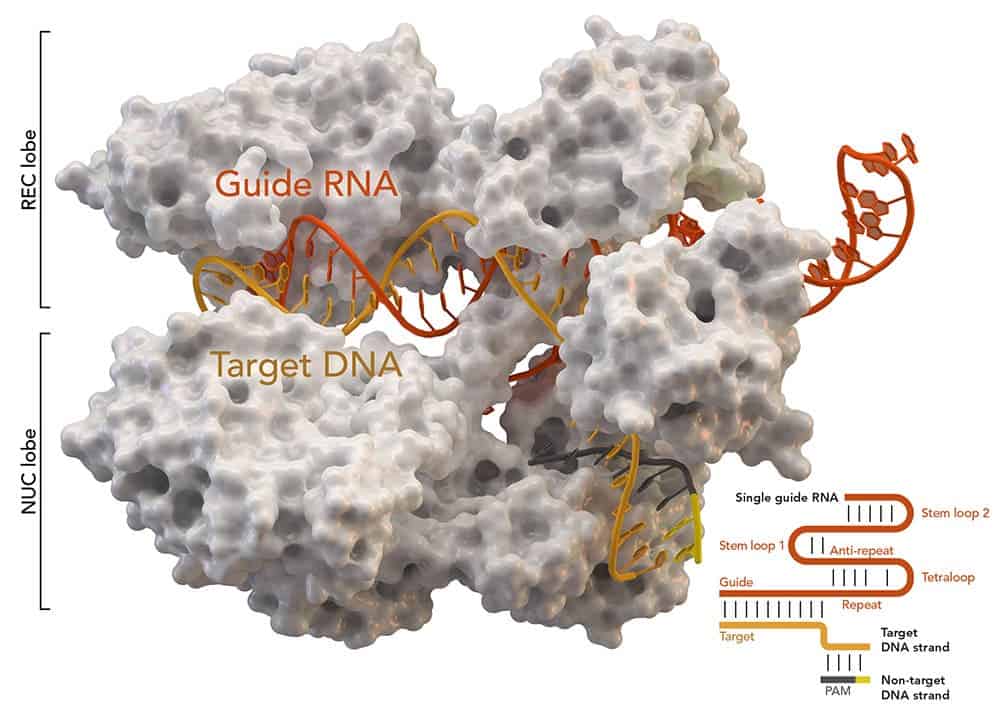As the revolutionary CRISPR gene editing technique promises to revolutionize the world, it’s important to also keep in mind the potential downfalls. A new study has revealed that the technique could introduce hundreds of unwanted mutations.

Clustered regularly interspaced short palindromic repeats (CRISPR) are segments of prokaryotic DNA containing short, repetitive base sequences which can be programmed to target specific stretches of genetic code, enabling us to edit DNA at precise locations. The method can be simplistically defined as a genetic scissor. CRISPR yields immense promise in gene editing and is almost set for clinical trials, but it’s not all easy-peasy, as a new study has revealed
“We feel it’s critical that the scientific community consider the potential hazards of all off-target mutations caused by CRISPR, including single nucleotide mutations and mutations in non-coding regions of the genome,” says co-author Stephen Tsang, MD, PhD, the Laszlo T. Bito Associate Professor of Ophthalmology and associate professor of pathology and cell biology at Columbia University Medical Center and in Columbia’s Institute of Genomic Medicine and the Institute of Human Nutrition.
The first clinical trial is slated to start this year in China, the next one is set for 2018 in the US. But even with the extreme precision of the technique, errors are still quite possible — even more so than we anticipated. Most studies that search for these missteps use predictive computer algorithms, but Tsang and his colleagues believe these models are often quite a bit off.
“These predictive algorithms seem to do a good job when CRISPR is performed in cells or tissues in a dish, but whole genome sequencing has not been employed to look for all off-target effects in living animals,” says co-author Alexander Bassuk, MD, PhD, professor of pediatrics at the University of Iowa.
To test their theory, they sequenced the entire genome of mice that had undergone CRISPR gene editing in one of their previous studies. In that study, CRISPR successfully corrected a gene that causes blindness, but now, they also found more than 1,500 single-nucleotide mutations and more than 100 larger deletions and insertions. Rather worryingly, none of these extra mutations weren’t predicted by the algorithms. Since even a single nucleotide being modified can cause significant problems, the effects of all these mutations together are virtually impossible to determine. But it might not be as bad as it looks.
For all these negative mutations… the mice seem to be fine and healthy. In fact, researchers say, this is no reason to scrap CRISPR or forego its advantages. Instead, Vinit Mahajan, associate professor of ophthalmology at Stanford University who was also involved in the study, is still a great supporter of CRISPR.
“We’re still upbeat about CRISPR,” says Dr. Mahajan. “We’re physicians, and we know that every new therapy has some potential side effects–but we need to be aware of what they are.”
However, even when the animals appear to be healthy and normal, scientists warn against putting all the eggs in the computer algorithm basket. They recommend using the full genome sequencing technique to complement the predictive algorithms and
The paper is named “Unexpected mutations after CRISPR-Cas9 editing in vivo.” Additional authors are Kellie A. Schafer (Stanford University), Wen-Hsuan Wu (Columbia University Medical Center), and Diana G. Colgan (Iowa).






